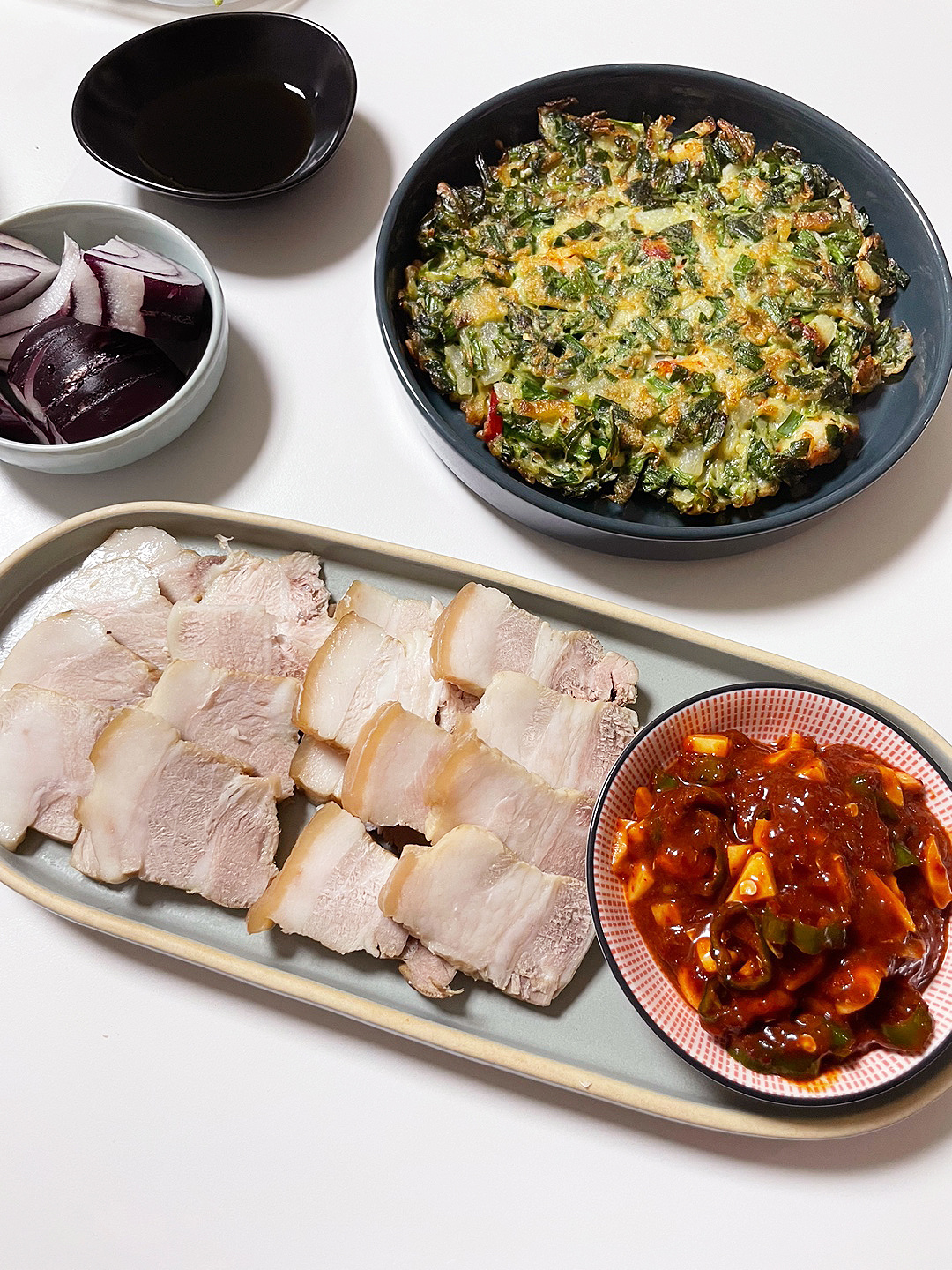Perfect Cold Pork Belly (Naeng Suyuk) Made at Home
Making Professional-Style Cold Pork Belly (Naeng Suyuk/Naeng Jeguk) at Home

A true delicacy beloved by many, especially among connoisseurs! The lean, beautifully rendered fat gives it a visual appeal reminiscent of whale meat. Today, I’m sharing my recipe for homemade Naeng Jeguk, also known as Naeng Suyuk. It’s especially divine when enjoyed with salted hairtail sauce, mimicking the exquisite flavor of pork served at Pyeongyang naengmyeon restaurants. Get ready to impress with this sophisticated dish!
Main Ingredients- 800g Pork shoulder or pork belly (Pork shoulder with less fat is recommended)
- 1 large leek
- 1 onion
- 10 cloves garlic
- 10 whole peppercorns
- 1 dried chili pepper (optional, adds depth of flavor)
- 1 Tbsp Doenjang (fermented soybean paste)
- 1/2 Tbsp coarse sea salt
- 50ml Soju (for tenderizing and removing odor)
Special Dipping Sauce- 2 Tbsp Galchi Sokjeot (salted hairtail sauce)
- 1 Tbsp minced garlic
- 1 chopped Cheongyang chili pepper (or other hot chili)
- 2 Tbsp Galchi Sokjeot (salted hairtail sauce)
- 1 Tbsp minced garlic
- 1 chopped Cheongyang chili pepper (or other hot chili)
Cooking Instructions
Step 1
Begin by removing the blood from the pork. Soak the meat in cold water and change the water several times for about an hour to ensure all blood is drained. This crucial step removes any gamey odor and results in a cleaner, purer flavor.

Step 2
Place the blanched pork, Doenjang, coarse sea salt, leek, onion, whole garlic cloves, peppercorns, dried chili, and Soju into a pot. Add just enough water to cover the ingredients. Bring to a boil over high heat, then reduce the heat to medium and simmer for approximately 35 minutes until the pork is tender. Once cooked, turn off the heat, cover, and let it steam for 10 minutes to retain moisture. (Tip: I cooked about 2kg and used half for Dongpo Pork. You can adjust quantities as needed.)

Step 3
Carefully remove the cooked pork from the pot. It’s best to proceed to the next step while the pork is still warm.

Step 4
Place the warm, cooked pork onto a wide, shallow tray or platter. Shape it nicely without letting it fall apart.

Step 5
Cover the pork tightly with aluminum foil. Then, place a heavy object on top for at least one hour to press it down firmly. I used a wooden cutting board topped with two 1.5L bottles of water for weight. This pressing process helps expel excess fat and liquid, creating a more compact and denser texture.

Step 6
After about 3 hours, you’ll notice a significant amount of rendered fat collected, as shown in the photo. Removing this fat is key to achieving the perfect Naeng Suyuk.

Step 7
Carefully separate the pork from the rendered fat and liquid. To prevent moisture loss, wrap each piece of pork individually and tightly with parchment paper. Then, place the wrapped pork into an airtight container (like a Lock & Lock container) and refrigerate for one day to set. This chilling process firms up the meat and allows the flavors to meld.

Step 8
The next day, you’ll find the pork has solidified beautifully. (Note: I used pork belly for this batch, but pork shoulder with less fat would be even more suitable for this dish. Feel free to choose based on your preference.)

Step 9
Unlike hot suyuk, Naeng Suyuk tastes best when sliced very thinly. Thin slices allow for a more tender bite and allow the full flavor to be appreciated without being overwhelming.

Step 10
Now, let’s prepare the special dipping sauce. Thinly slice the Cheongyang chili peppers and mix them with Galchi Sokjeot and coarsely minced garlic. The deep umami of the salted hairtail sauce combined with the pungent garlic creates a fantastic balance.

Step 11
Serve the thinly sliced cold pork alongside the flavorful dipping sauce and enjoy this delightful dish! It pairs wonderfully with Pyeongyang naengmyeon or a bowl of hot rice for a complete meal.




